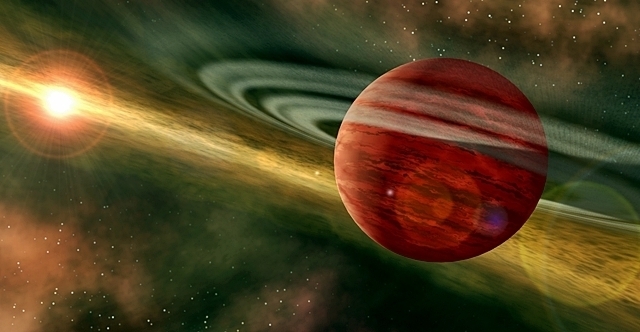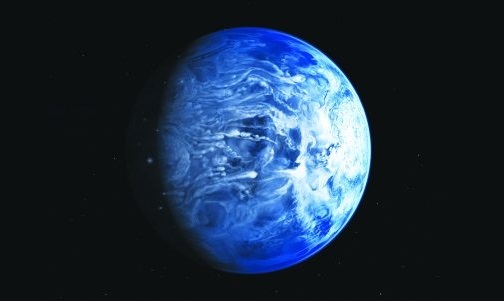The 15 strangest planets in the universe
Are you one of those who believe that there is more life outside of our planet? Regardless of whether this theory is true or not, what we certainly cannot question is the fact that there are thousands and millions of planets more than we know.
Venus, Mercury, Mars, Earth, Jupiter, Saturn, Uranus, Neptune and Pluto (although the latter is considered a dwarf planet) are not the only planets that make up the vast universe and it is just because that same detail that there are more galaxies in this, more solar systems, more stars, more moons and of course, more planets within these.
- It may interest you: "Types of gemstones: properties and how to use them"
In recent years, astronomy experts and NASA have discovered several planets around us, in neighboring systems but that are thousands of light years from us and therefore it is almost impossible to reach they. However, that does not detract from the mystery that surrounds them but, on the contrary, magnifies it.
It is because of that we bring in the following article the strangest planets that exist in the universe
and of which perhaps you have never heard.The 15 rarest and most unique planets in the universe
These mysterious planets can help you understand a little what is beyond the obvious, even though they are unimaginable distances, they are planets that exist in reality and that, perhaps in the distant future, we can discover up close and even colonize.
1. J1407b (The planet of the rings)
If you are a fan of the rings that make up the planet of Saturn, then this exoplanet will enchant you and intrigue you at the same time. It is known as ‘the planet of the rings’ because it has 37 giant and bright rings that surround the planet, being 20 times larger than those of Saturn and having a length of 120 million kilometres. This is their most striking and peculiar characteristic, since they also have a larger satellite than the one that Mars has.
2. HD 106906 b (The planet that shouldn't exist)

It has earned this nickname due to the extreme rarity of its vitality and current existence in its solar system, as it is an extrasolar planet. orbiting about 97,000 million kilometers from its star, far enough from it to get a little heat and light, isn't it? So?. But this is the peculiar thing, not only is it a planet that is not canceled, but it has the astonishing temperature of 1,500 ºC that, in short, no expert can explain.
3. HD 209458 b (Osiris)
Also known as ‘the planet that has a tail’ because it has (as its name implies) an immense tail of 200,000 kilometers in diameter that stretches more and more through space, releasing the mass of this planet extrasolar. This loss is due to the fact that its star or sun has extreme radiation that causes the planet to lose part of its atmosphere over time.
4. GJ 504 b (The Pink Planet)
This is definitely the characteristic for which this young planet has gained fame in the community of astronomers. Its light of pink hue is due to the heat it expels from it, since it is a planet with a short time formation, making it one of the most recent so far. However, another feature that they have not missed is its composition, since it has four times the mass of Jupiter, however this data places it as one of the exoplanets with the lowest mass of all.
5. PH1 (The planet surrounded by stars)
This interesting planet was discovered in mid-2012, being one of the planets with a stable orbit, but with a quite peculiar quality is that this planet orbits around a couple of stars but in turn, there are two more stars that rotate around him. It is located in the constellation Cygnus, which is located more than 5000 light years from Earth and was discovered by volunteers from the website Planethunters.org, from where it derives its name (PH1).
6. HD 189773b (The Glass Planet)

This beautiful planet in sight is located a few 62 light years from Earth, it has an attractive and intriguing deep blue color which is the result of its strange atmosphere, which is composed of atoms and silicate particles that offer it that distinctive Colour. But that in turn, hides a lethal combination of a scorching 900 ° C temperature. and winds that reach 8,600 km / h, however, its greatest mystery is that thanks to the production of silicate, glass rains on this planet.
7. Upsilon Andromedae B (Saffar)
This is by far one of the most mysterious planets in the entire universe, both because it has two well-known names (Saffar and Upsilon Andromedae B due to its location at 10 degrees from the Andromeda galaxy) as well as its unique characteristics that are derived from the Science fiction. Let's start by saying that it is speculated that it is a gas giant extrasolar planet without a solid surface, but with a rocky core, it also has a translation period of 4.62 days, taking 5 days to orbit a star binary.
But perhaps its most astonishing peculiarity is that when the sun sets on this planet, temperatures rise considerably, while when the sun rises, they decrease.
8. TrES 2b (The Dark Planet)
This is one of the largest exoplanets discovered so far as it is estimated to be twice the size of Jupiter and is about 1,400 light years distant. But is it really that big? Well, make a quick calculation, it is estimated that Jupiter can fit 1,300 planets Earth, so how much capacity can TrES 2b hold? A lot.
Despite being huge, this planet has the lowest known density, since it is estimated to be similar to that of a cork, being possible due to its temperature of 1,260ºC. However, its biggest curiosity is that it is extremely dark, it is said that it is even darker than black acrylic paint, because it only reflects 1% of the sunlight that reaches it.
9. 55 Cancri e (The Diamond Planet)
Speaking of mysterious beauties, this planet discovered in recent years is found near the constellation Cancer, and which has left more than one expert astronomer with their mouths open due to its interesting composition. Is that this planet is covered by nothing more and nothing less than diamonds, as well as graphite instead of being covered with water and granite.Can you imagine taking a dip in diamonds? This peculiarity is the result of the planet being rich in carbon.
10. WASP-12B (The Rugby Planet)
This planet is located about 600 light years from the constellation Auriga and experts say that its shape is very similar to that of a rugby ball, but that was not always the case. This form has been adapting as a result of an absorption process by its star, and this planet orbits so close to its sun that its shape is distorting and will continue to do so, plus it is exposed to very high temperatures of 1,500 degrees centigrade.
11. HAT-P-7b (Planet of Jewels)
It is an exoplanet located in the constellation Cygnus and about 1,000 light years from Earth and is considered one of the most interesting planets for its jewel climate. As you read it, on the dark side of this exoplanet there are ruby and sapphire precipitations that end up being part of its surface. This phenomenon is explained by the formation of aluminum oxide present in it.
12. 30 Arietis (Of Four Suns)
We previously talked about a huge planet because it is 2 times bigger than Jupiter, but can you imagine one that is 10 times bigger? Well, that is the case of this gas giant that is 136 light years from Earth, its most outstanding feature is that it has an orbit of 335 days, revolving around a binary star, which in turn revolves around two suns more.
13. Gliese 436 b (Of fire and ice)
A planet in short that seems to be taken from the imagination of the most creative fantasy writers, surely you have heard the book of Game of Thrones, A Song of Ice and Fire, right? Well, can you imagine a planet that is made of fire and ice? It is just what happens on this planet, where despite having a temperature of 439 degrees Celsius, its poles are covered with ice.
This phenomenon is due to the fact that gravity on this planet compresses water vapor, another fact interesting is that water has also been discovered on this planet and is only 30 light years from distance.
14. Ogle-2005-Blg-390lb (The Frozen Planet)
And speaking of Game of Thrones, on this planet located in the constellation of Sagittarius, there is only room for cold and eternal darkness, it could be said that here winter will never cease and It is because its star is just a red dwarf, so it does not receive much heat, so much so that it has one of the most inhospitable temperatures in the entire universe, reaching -220 degrees. centigrade.
But not everything is so negative on this planet since, despite having a frozen surface, it has a nucleus that is capable of generating heat inside the planet, in addition to producing tides as a result of the gravity of its moons.
15. Psr B1620-26 B (The Planetary Methuselah)
Surely you have guessed that this planet has earned its name because it is old, but not only is it old, but it is perhaps the planet oldest in the entire universe and is that it has a speculated age of 3 billion years, being three times the age of our planet.
Is it as old as the universe? Well no, but it was formed about a billion after the Big Bang around a young star that is now dead, so it is estimated that it is a very cold and dark planet, but that without a doubt has seen time pass like no other.
As you can see, none of these planets have life, but ultimately it gives us an idea that, at least as far as planets are concerned, we are not and were not alone in the universe.
